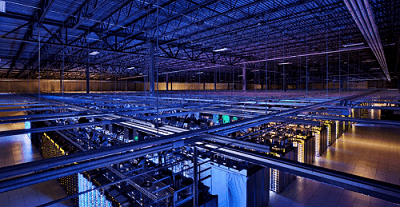Understanding the Difference Between Normal Data Centers and Hyperscale Data Centers
In the rapidly evolving world of technology, data centers play a critical role in storing, processing, and managing data. However, not all data centers are created equal. Two primary types are normal data centers and hyperscale data centers. Understanding the differences between them is essential for businesses and IT professionals as they make decisions about their infrastructure needs. This blog post delves into what sets these two types apart.
What is a Normal Data Center?
A normal data center, often referred to as a traditional data center, is a facility used to house computer systems and associated components, such as telecommunications and storage systems. It typically serves a specific organization, providing the necessary resources to support its IT operations. Key characteristics of a normal data center include:
- Scale: Normal data centers range in size but generally support a single organization or a limited number of clients. They might contain hundreds or thousands of servers.
- Infrastructure: They feature a mix of hardware from various vendors and may have customized configurations to meet specific organizational needs.
- Management: These data centers are usually managed by the organization’s IT staff or a third-party provider, focusing on the specific requirements of their applications and workloads.
- Scalability: While normal data centers can scale, they often face physical, power, and cooling limitations. Scaling up typically requires significant investment and time.
- Redundancy and Resilience: Normal data centers have redundancy features (like backup power and cooling) to ensure uptime, but these measures can vary greatly in quality and scope.
What is a Hyperscale Data Center?
A hyperscale data center, on the other hand, is designed to provide robust, scalable cloud computing and big data capabilities. These facilities are built by large companies like Amazon, Google, and Microsoft to support their vast and ever-growing cloud services. The defining characteristics of a hyperscale data center include:
- Scale: Hyperscale data centers are massive, with thousands to millions of servers spread across multiple locations. They are designed to handle extremely high volumes of data and users.
- Standardization: Unlike normal data centers, hyperscale data centers use highly standardized hardware and software. This standardization allows for more efficient management and scaling.
- Management: Managed by specialized teams, these data centers use advanced automation and orchestration tools to handle operations, often with minimal human intervention.
- Scalability: Built to scale out quickly and efficiently, hyperscale data centers can add capacity on-demand. They are designed with modular components that can be expanded seamlessly.
- Redundancy and Resilience: Hyperscale data centers have advanced redundancy and resilience measures, often exceeding those of normal data centers. They include multiple layers of backup systems, distributed across various locations to ensure continuous service availability.
Key Differences
- Purpose and Use Case:
- Normal Data Centers: Typically used by single organizations to meet their specific IT needs.
- Hyperscale Data Centers: Serve global cloud providers and support large-scale applications and services.
- Scale and Capacity:
- Normal Data Centers: Limited in size and scalability.
- Hyperscale Data Centers: Vast, with the ability to scale effortlessly to meet growing demands.
- Infrastructure and Standardization:
- Normal Data Centers: Use a variety of hardware and customized configurations.
- Hyperscale Data Centers: Employ standardized, often proprietary hardware and software to maximize efficiency.
- Management and Automation:
- Normal Data Centers: Managed by in-house or third-party IT teams, with varied levels of automation.
- Hyperscale Data Centers: Highly automated, with specialized teams and advanced tools.
- Cost Efficiency:
- Normal Data Centers: Higher operational costs per unit of compute/storage due to smaller scale.
- Hyperscale Data Centers: Economies of scale lead to lower costs per unit of compute/storage.
Conclusion
Both normal and hyperscale data centers have their place in the technology ecosystem. Normal data centers are suitable for organizations with specific, possibly smaller-scale IT needs that require tailored solutions. Hyperscale data centers, however, are the backbone of the cloud computing era, designed to handle massive data volumes and provide scalable, efficient services on a global scale.
As technology continues to advance, the distinctions between these types of data centers become increasingly important. Businesses must carefully consider their requirements and growth potential when deciding which type of data center will best support their operations. Whether leveraging the tailored approach of a normal data center or the vast capabilities of a hyperscale data center, understanding these differences is key to making informed infrastructure decisions.
